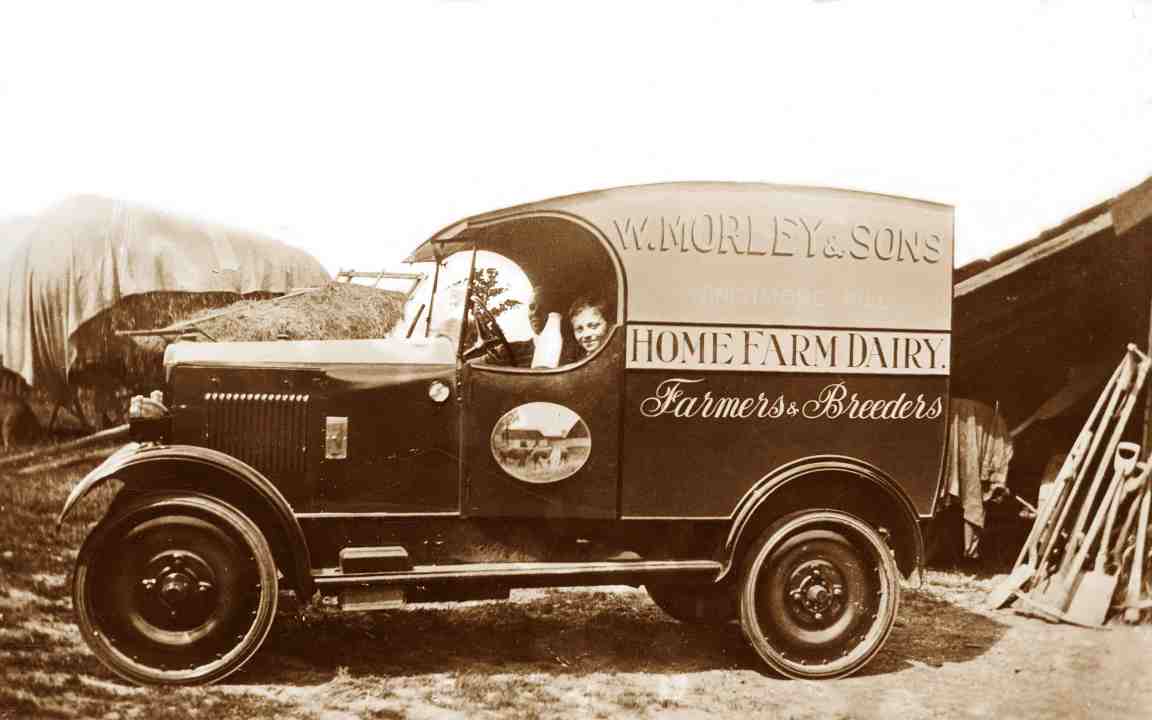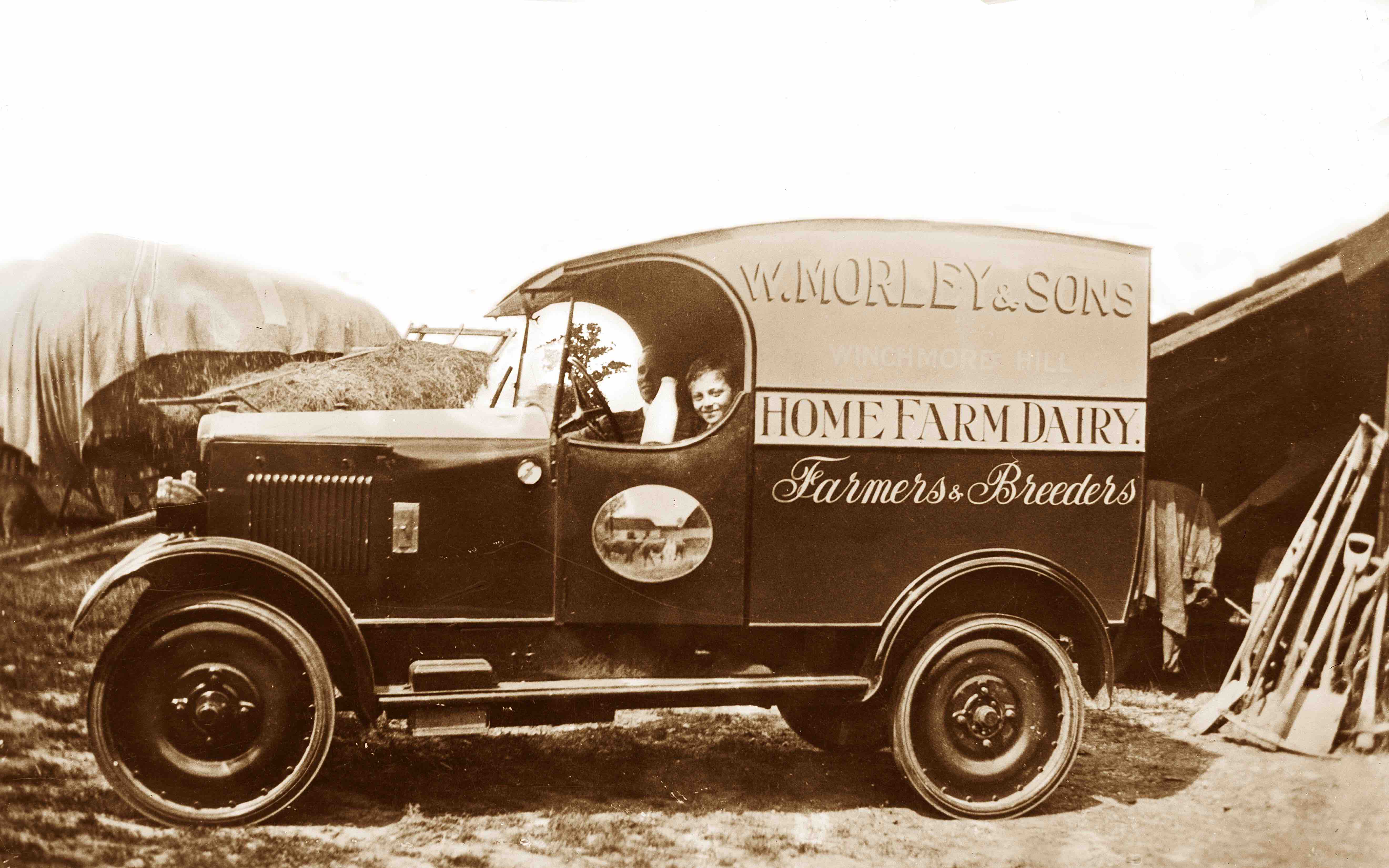Even if you couldn’t care a fig for sustainability, it’s hard not to be impressed with the Nostradamus-esque foresight of the milk float. In an era when Old King Coal ruled the roost and recycling meant pedalling backwards on your Raleigh Grifter, the pre-dawn hour across the UK was the stage for a phalanx of electric vehicles trundling along our streets and lanes delivering our order of gold or silver top in reusable, pint-sized bottles.
The decline of the milkman in percentage figures would cause palpitations to the most hardened of economic wonks. In the 1970s, 94 per cent of Britons had their milk delivered to their doorstep via an electric float – while in 2016 just 3 per cent of milk was delivered by milkmen, according to Defra.
What happened? Well, of course, supermarkets happened, selling slightly cheaper milk which could be stored in ever-larger domestic fridges. Add in the introduction of long-life milk and UHT milk, and the milkman (I refuse to modernise this to milk-person or dairy udder-ling) became an endangered species.
The UK is not, contrary to popular perception, the only country in the world to have milkmen. In the Philippines they’re called lecheros and in rural India you might get your milk delivered still in its churn. But we’re the only country who ever offered such coast to coast coverage of a morning.
And am I the only person who feels we’ve lost something when there is a whole generation who have never depressed the foil on a pint of gold top and realised that they can’t actually pour the milk, so solid is the layer of Jersey cream at the top of the bottle? Cholesterol-saturated bliss – and my goodness it tasted good on cornflakes.
Yet unlike slam-door train carriages and Eric Morecambe, this is a form of nostalgia that could actually be revived right now if we fancy it. The milkman still exists, albeit in truncated form. And in a world where we are getting everything from sushi to second-hand clothes delivered to our homes, it’s odd that the original, straight-to-your-door pioneers haven’t managed to harness our recent reluctance (going strong since March 2020 for many people) to leave the house for anything other than a doctor’s appointment.
I should state here that I have absolutely no affiliation with a dairy of any kind and the closest I’ve come to promoting the milkman is lending my mate Simon a fiver until payday when he worked a float as a teenager in the 1990s in Chester. But consider the advantages. Comparing one of the remaining milk delivery services (Milk and More is one of the most popular, in case you’re wondering) with the average supermarket shows that a pint of milk delivered to your door costs about 40p more than trekking down to the shop. That’s a pretty tiny delivery charge compared with Just Eat or Amazon. Not only that, but to get your supermarket milk at that price per pint, you’d have to buy at least a litre – an amount you might not necessarily want to consume straight away, or have space in your freezer for.
There is a whole generation who have never depressed the foil on a pint of gold top and realised that they can’t actually pour the milk, so solid is the layer of Jersey cream at the top
A glass bottle of milk in the door of your fridge is also aesthetically pleasing; it looks as comfortable and natural (even in a modern fridge) as a knob of melting butter on a jacket potato or Christopher Lee in a tweed jacket in The Wicker Man.
And finally, while nobody was watching, dairies have seriously upped their game in terms of what else you can have delivered along with your pint of silver top. When I was a teenager, there was the option of eggs or very poor quality orange juice. Now, you can order pizza, pastries, plant seeds, biscuits and vegetable boxes.
Patriotism is rarely a match for harsh economic truths in Britain. And the demise of the milkman can be put down to the perception that it’s ‘cheaper in Sainsbury’s’. Yet any potential milkman revival doesn’t have to be the exclusive domain of rosy-spectacle donning hipsters who admire the sustainable aesthetic. To use your milkman (if you can find one) is to do something that, in a picayune yet vital way, brings communities back together. Macabre as this is, there was a time when a pile-up of bottles outside someone’s door was an instant signal to neighbours that all was not well. And while the clanging of bottles at dawn may not be the wake-up call you most desire, it’s preferable to the bilious sound of delivery motorbikes and people who think it’s acceptable to turn their car radio on at full volume at 6 a.m. before actually closing the door.
The milk industry has, to be frank, completely failed to raise public awareness as to their natural fit into our dubious new world of ubiquitous home delivery. So I’m going to do it for them. Putting gold top on your cornflakes may be ruinous to your arteries. But the milkman deserves a revival all the same, even though I never did get that loaned ‘until payday’ fiver back. Simon, if you’re reading this, time to cough up mate. And I’ll have six eggs and a veg box while you’re at it.








Comments